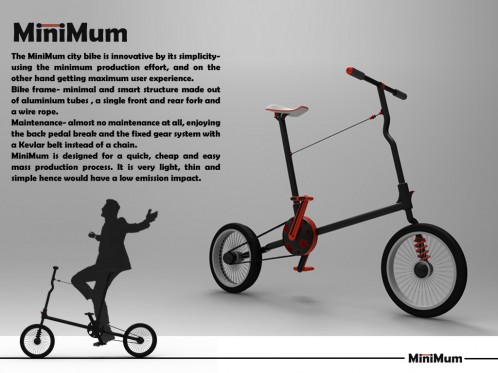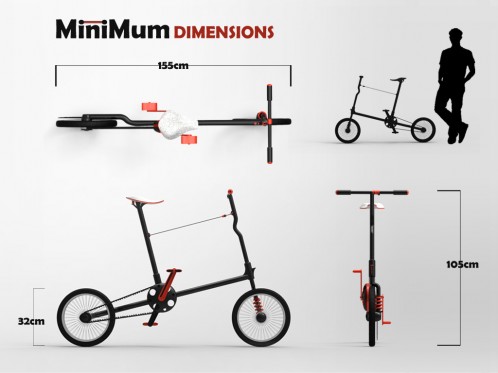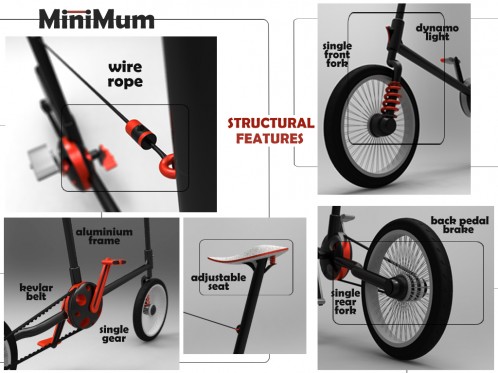 MiniMum is the latest bike idea from designer Omer Sagiv, whose previous concept bikes I featured in a 2010 post. The MiniMum was designed as a simplified city bike; as Omer says, “using the minimum production effort, and on the other hand getting maximum user experience.” The frame is made from aluminum tubes and a steel cable and features monoblades front and rear. He explains that the wire cable “supports the seatpost by maintaining a flexible tension towards the front of the bike, in a very elegant and light way- giving it also its uniqueness.” See further descriptions of Omer’s concept on the presentation boards you see here.
MiniMum is the latest bike idea from designer Omer Sagiv, whose previous concept bikes I featured in a 2010 post. The MiniMum was designed as a simplified city bike; as Omer says, “using the minimum production effort, and on the other hand getting maximum user experience.” The frame is made from aluminum tubes and a steel cable and features monoblades front and rear. He explains that the wire cable “supports the seatpost by maintaining a flexible tension towards the front of the bike, in a very elegant and light way- giving it also its uniqueness.” See further descriptions of Omer’s concept on the presentation boards you see here.
Interesting concept, but the first issue that I jumped out at me when I viewed the renderings was the height of the cable that serves as the effective top tube. In relationship to seat/stem height, it looks like it would require a very high step over which is not desirable if you are riding in street clothes (not to mention that fact that a high steel cable can be a bit intimidating to straddle). Short of a quick ride on a Slingshot frame many years ago though, I have no experience with tensioned cable frame designs, so I would love to hear feedback from those of you with firsthand experience. I am sure that Omer would appreciate any constructive comments on the design as well.



Leave a Reply